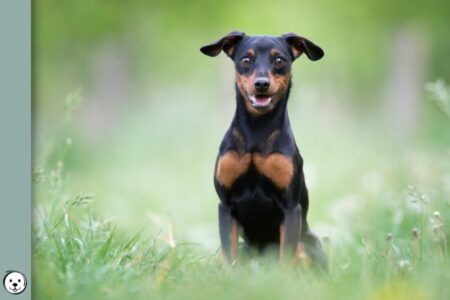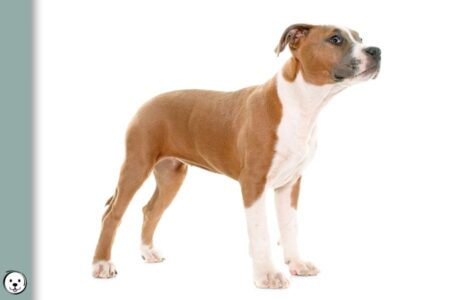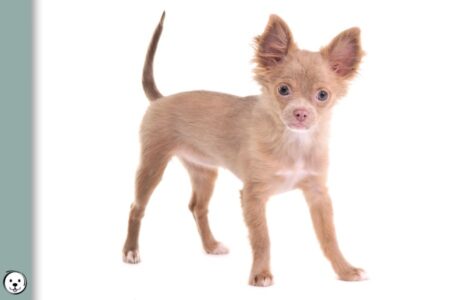The Belgian Malinois is a very energetic working dog. Virtually all of them have a sable pattern with a black mask and varying amounts of black overlay.
Standard Belgian Malinois Coat Colors
Let’s have a closer look at the different Malinois colors & patterns:
Sable Belgian Malinois
Sable with a black mask is the only Belgian Malinois standard color pattern.
This makes about all Malinois fixed for a normal-patterned coat (ky/ky) with a shaded sable pattern (Ays/Ays) or clear sable pattern (Ay/-) and black eumelanin (B/B D/D) expressed in the melanistic mask (Em/Em).
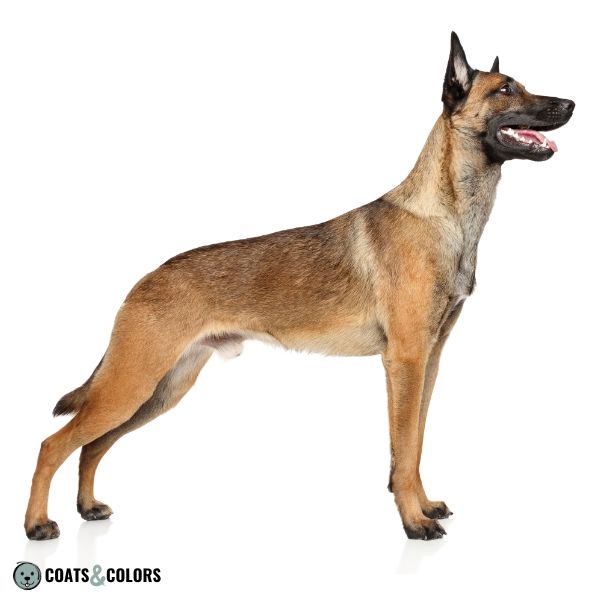
But even with the same basic pattern, there is still some degree of variety.
The main difference between Belgian Shepherd colors is the amount of dark shading, the size of the mask, and the intensity of the yellow base pigment on individual dogs.
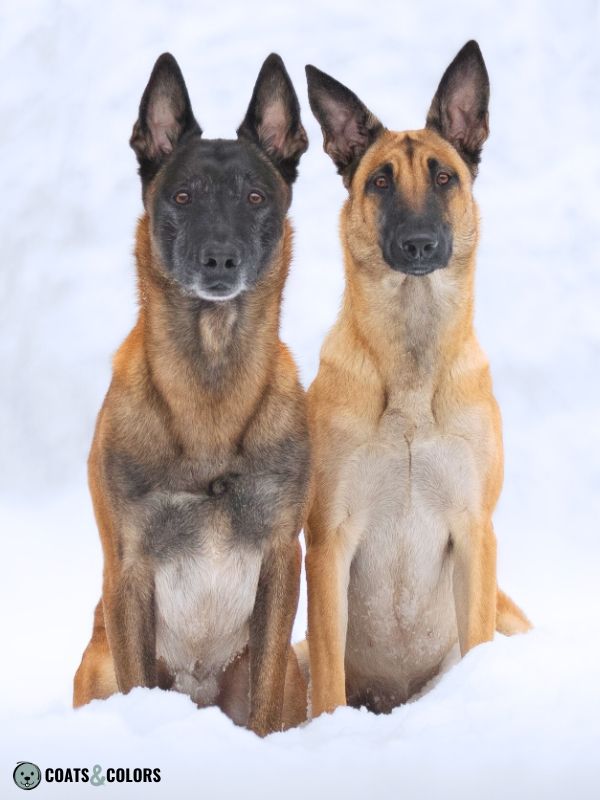
Phaeomelanin Intensity
Belgian Malinois color variations are mostly named for their phaeomelanin intensity.
Based on their color, colors of Belgian Malinois are named silver, grey, cream, fawn, red, or mahogany.
The base coat most often ranges from yellow to orange-red to rusty red.






The FCI standard refers to all these colors as “fawn” while the AKC distinguishes between yellow (which they call “fawn“), orange-red (which are called “red“), and red (which are called “mahogany“) dogs. The Kennel Club is the only major breed club that also includes “grey” as an accepted shade of phaeomelanin.
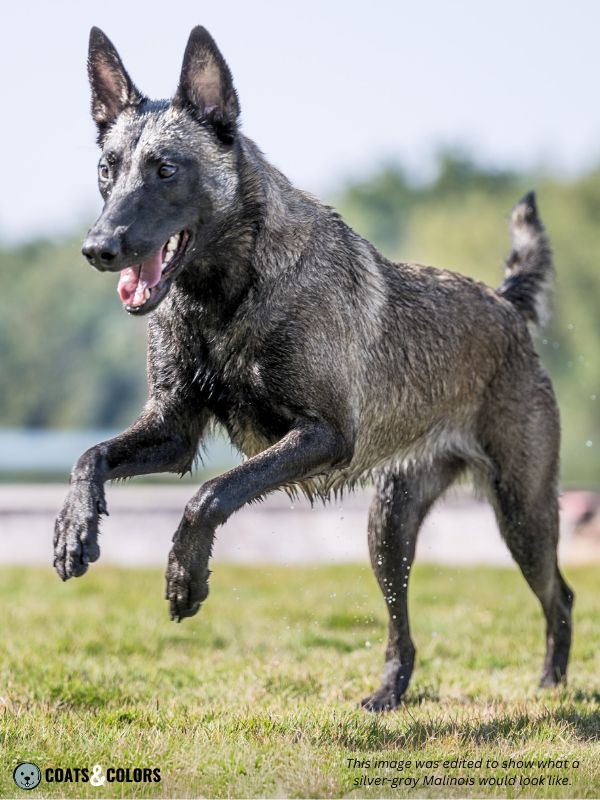
Sable Shading
All breed standards ask for a black mask and some black overlay.
But there is a great degree of variety between individual dogs.

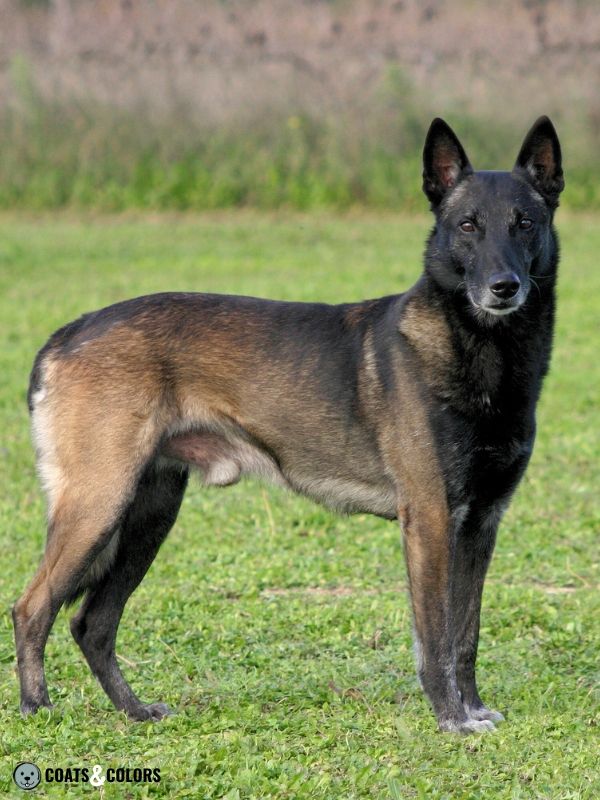
Many Malinois appear to be clear sable (Ay) after all, given their almost solid yellow adult coats with little black tipping along the back. Some minimal overlay might be caused by their mask actually.
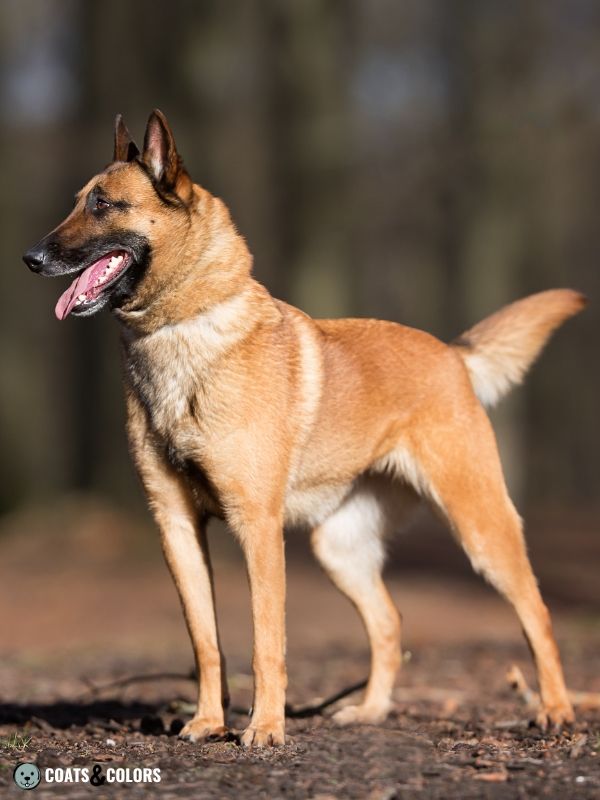



Shaded sable (Ays) on the other hand causes black tips on some hairs.
Shading is especially pronounced on the dog’s upper body including his shoulders, back, and sides, often amplified when combined with a black mask. It often causes a darker or black tip on the tail and a black triangle on top of the violet gland.
And unknown modifiers cause some dogs to have more shading than others.

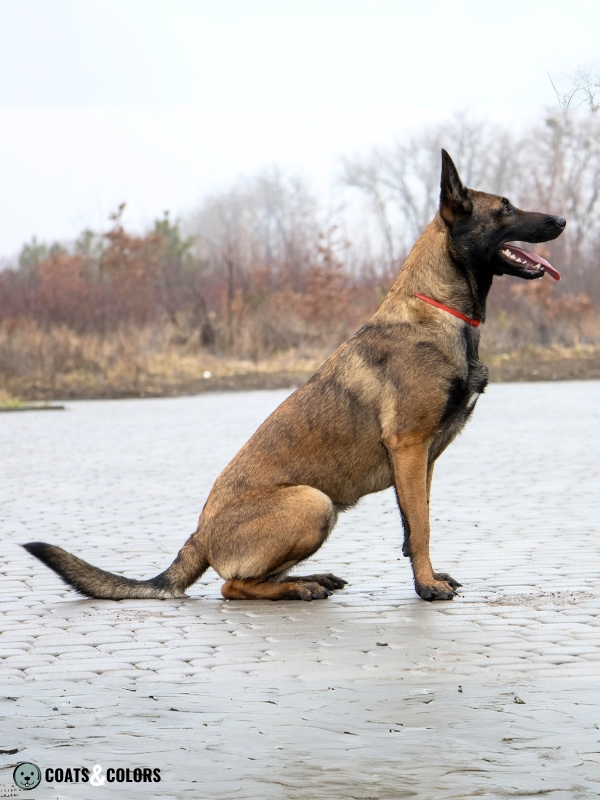


The AKC website distinguishes between patterns with little black overlay (fawn, mahogany, red) and those with obvious black overlay (fawn sable, red sable).
This can be a little confusing since all Malinois are sable-patterned. The AKC apparently just uses “sable” as a breed-specific synonym for pronounced black shading in Malinois.
Likewise, the Kennel Club website for Malinois lists patterns such as 1) fawn, 2) fawn black mask, 3) fawn black mask & overlay, and 4) fawn black overlay as separate breed standard colors, probably depending on the subjective impression of size or prominence of individual characteristics.
The French version of the FCI standard calls the black overlay on the Malinois charbonné referring to the “flamed” or sooty charred look on every Malinois’ sable pattern.
The Kennel Club describes dark sabling as a “light dusting“.
Shaded sable develops with age, expect a Malinois puppy to go through different stages.
Dogs can be born with lots of black in their pattern, then they clear into a more yellowish coat, and finally their black hair tips reappear (or not, in case they are clear sable).
The amount of dark hair tips can fluctuate depending on seasonal coat changes.
A very small number of Malinois seem to be agouti carriers (Ays/aw or Ay/aw) or tan point carriers (Ays/at or Ay/at)[4]. My guess is that agouti often goes unnoticed in Malinois since many of them are already really dark-patterned and their mask covers any agouti facial markings that would give them away.
Extreme Shading
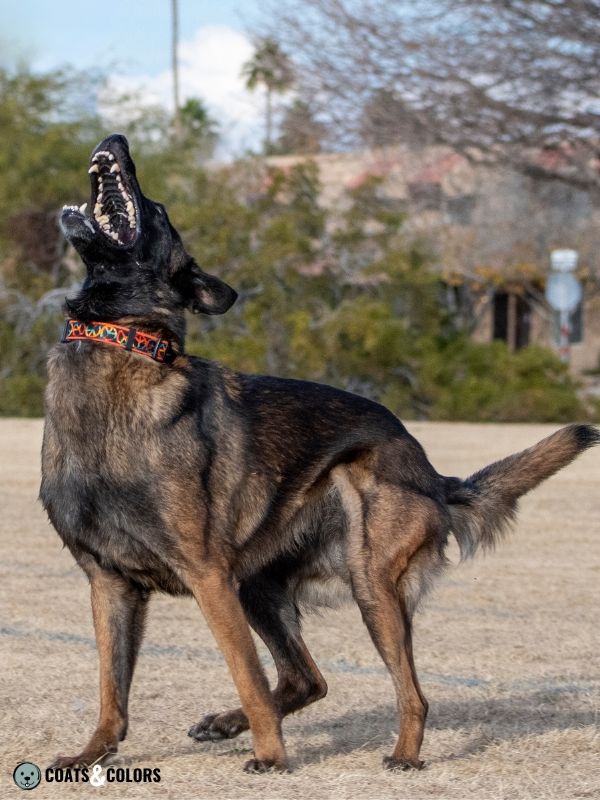

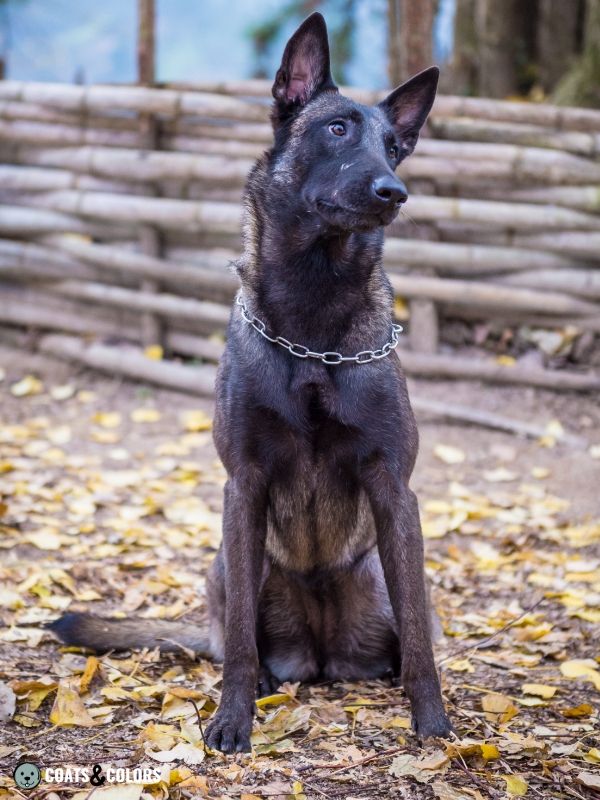

On some Malinois, you get an extreme version of black shading.
Some of the more darkish dogs might have an agouti pattern (Em/Em ky/ky aw/aw). I found an example of a Belgian Malinois that tests as aw/aw (there is an image gallery at the bottom).
But most of these dogs test like any regular Malinois (Em/Em ky/ky Ay/- or Ays/Ays) while looking almost solid black or almost seal-ish (which they are not since they usually don’t have dominant black KB).
However, so far no one knows what causes extreme black overlay.
One idea is that it has something to do with an extended black mask.
However, extreme shading also occurs in non-masked dogs. Thus, it might be more a matter of some unknown modifier that adds a ton of eumelanin to the hair banding in sable coats.
Some breed fanciers feel extensive sable shading is not in line with the breed standards which list “too much black overlay” as a serious fault.
However, while standards say dogs should have black overlay they don’t really provide a clear definition for the maximum acceptable amount of black.
Black Masks
A dark mask is a mandatory part of Belgian Malinois markings.
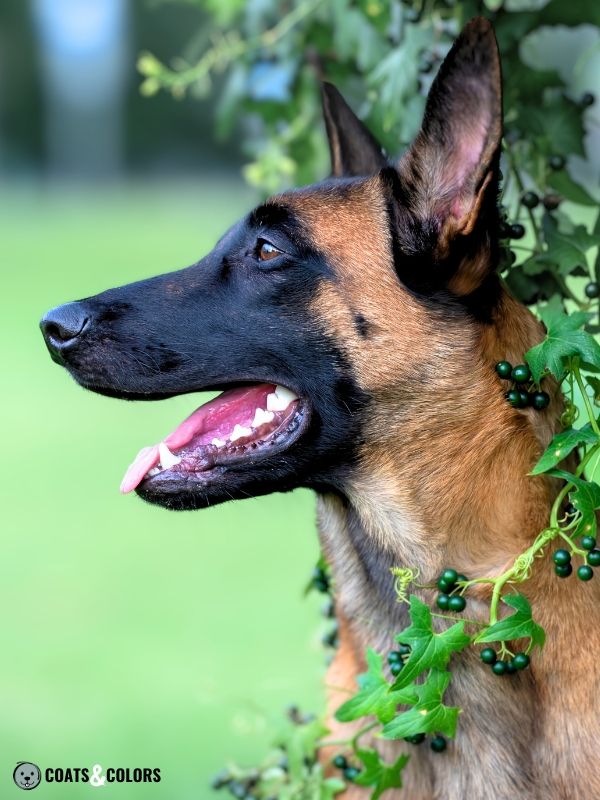
Today, it is one of the trademarks of the breed and all dogs are fixed for Em/Em.
But not all Malinois of the past had a mask, apparently.
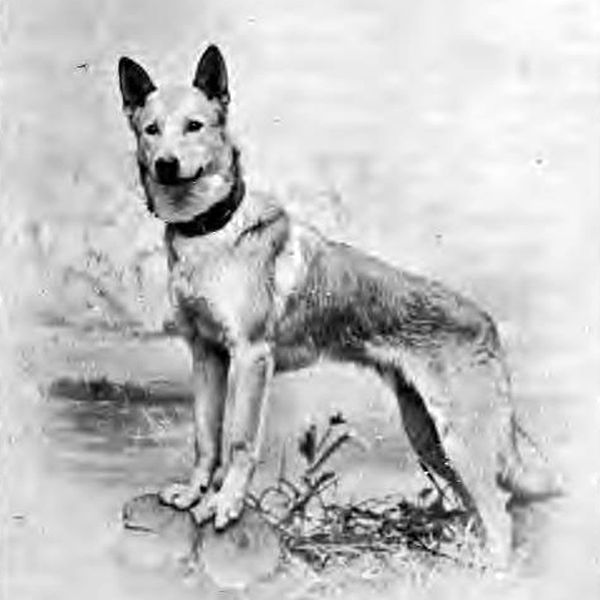
Le chien auxiliaire de la police (1907)
Modern standards call for a very pronounced mask with “one single black zone” covering the muzzle and eyes in black hairs. It also should cause the ears to be black.
Many Malinois show some premature greying. This can cause some white or gray frosting on the chin or muzzle even in younger dogs.
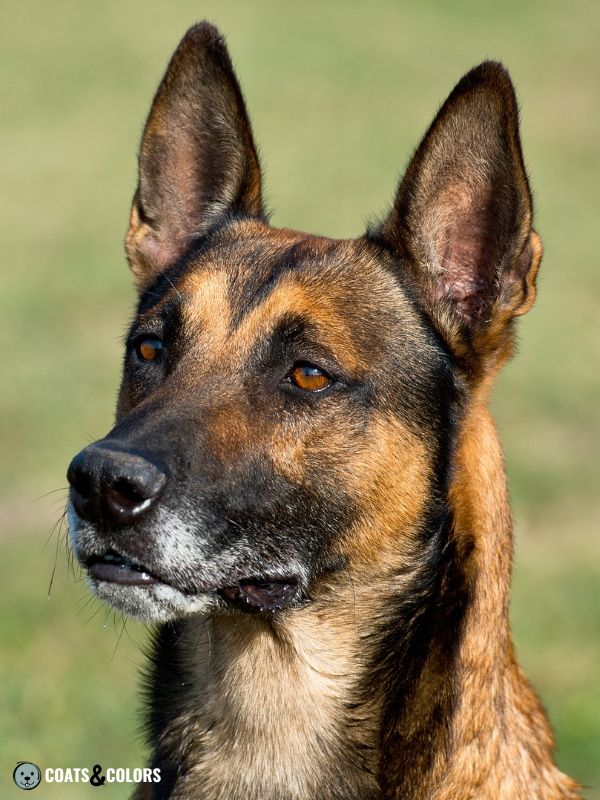
Little or no masking is a fault. As well as too much masking, it seems.
The Kennel Club says that they don’t favor dogs with a black mask that extends “above the eye and brow area“, indirectly excluding some of these dogs from conformation.
But mask sizes vary a lot in this breed.
In some dogs, the mask is just barely as large as required by the standard.
But many Belgian Malinois have a mask that is quite large and also covers the forehead and cheeks in black hairs.
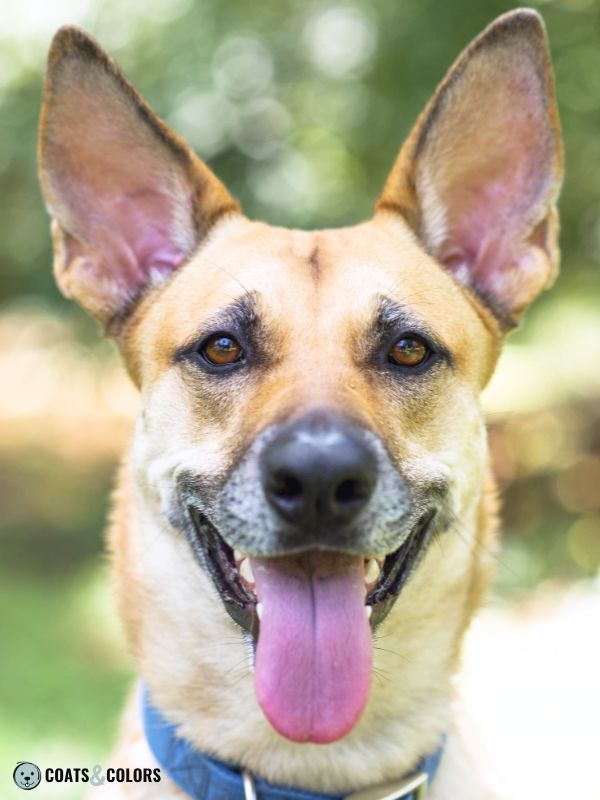

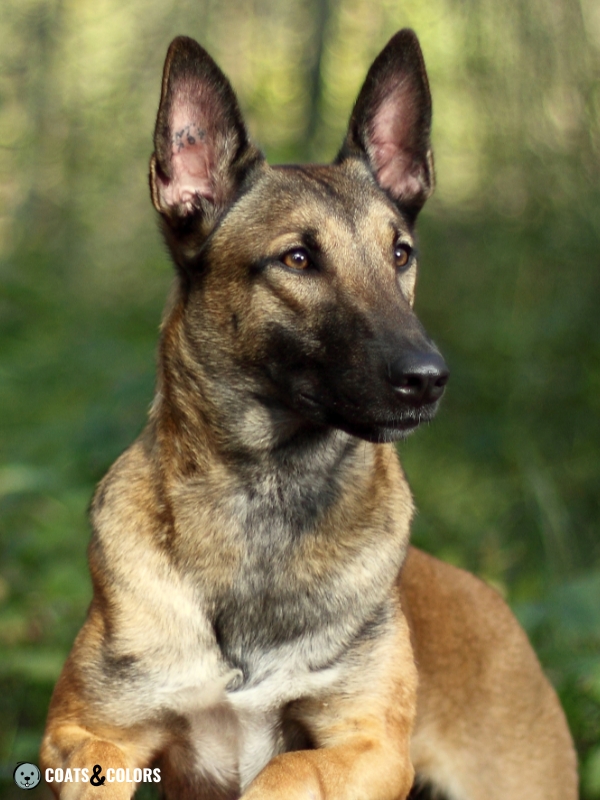






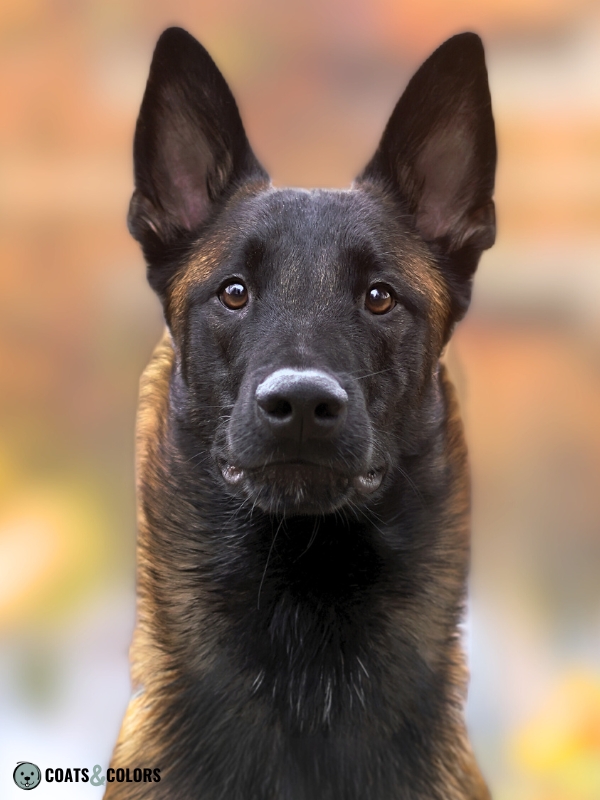
In some dogs, unknown modifiers seem to cause an extremely extended black mask. Malinois are indeed one of the breeds where exaggerated masking occurs regularly.
An extended black mask can lead to an almost solid black coat down to a dog’s chest, underside, or paws. And in extreme cases, this might be considered as maybe too much black overall.
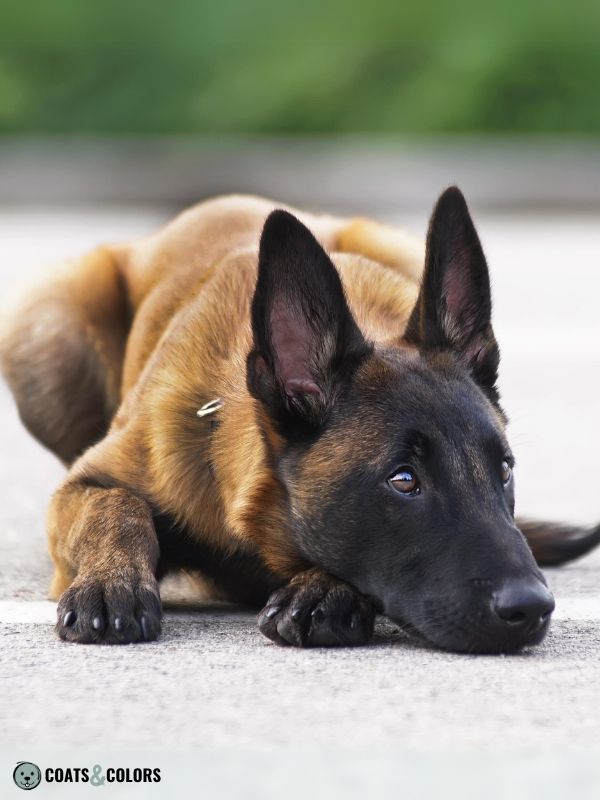




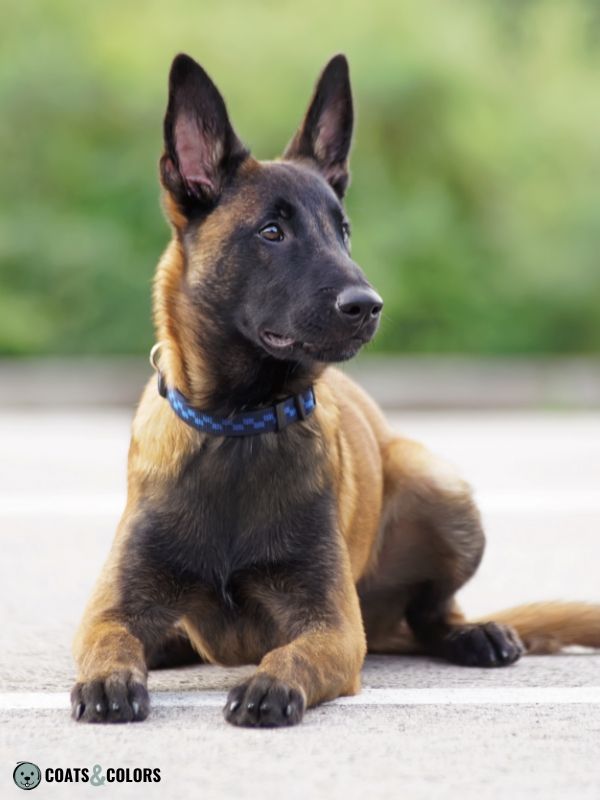
Non-Standard Malinois Coat Colors
Non-standard colors occur in any dog breed. Most breeders avoid them, others breed them on purpose because they look nice or can be sold as “rare colors”.
I strongly advise you to not select a Malinois puppy based on its coat color.
And keep in mind that it is quite easy to produce “rare colors” of Belgian Malinois. These colors are only rare in the overall purebred population but can easily be produced if you understand color genetics.
Many non-standard colors and patterns happen by accident due to recessive alleles.
Recessive traits will only be expressed in dogs that inherited one copy each from their dam and sire. While dogs with just one copy can carry and may pass on these traits over generations.
In the case of the Belgian Malinois, some genes that produce non-standard colors might have been around since the beginning of the breed.
Others might have been introduced as a side-effect of crossbreeding (e.g. in KNPV lines) in the past when color is just not that big of a deal when breeding a good working dog.
Black Belgian Malinois
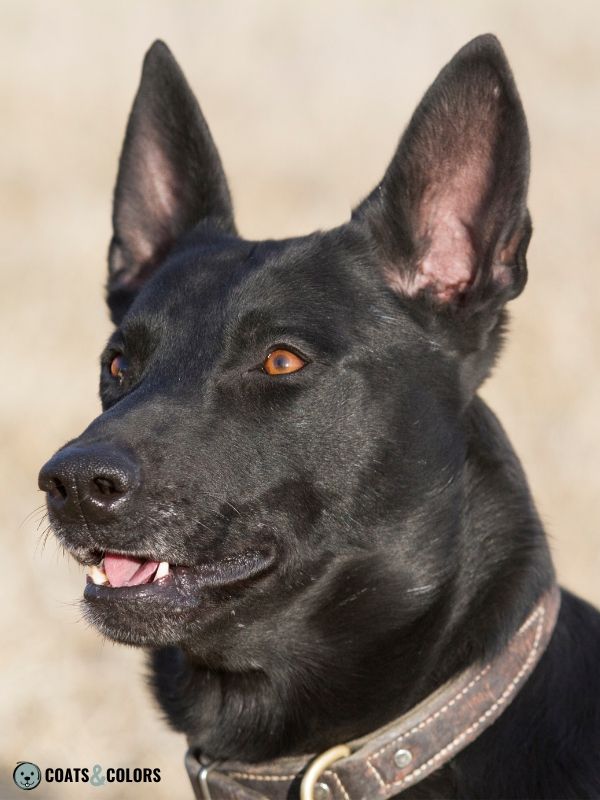


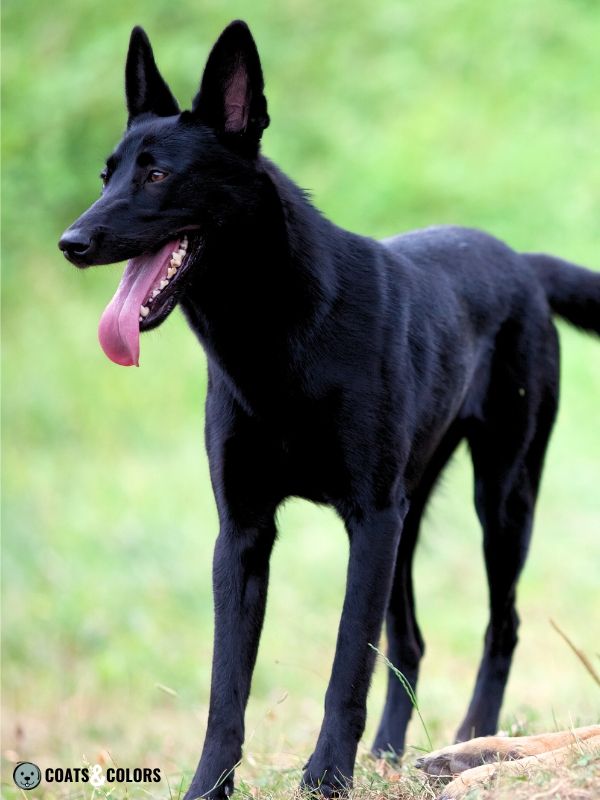
The FCI standard lumps together both the solid black Groenendael and the shorthaired Malinois (with Laeken and Tervueren) under the Belgian Shepherd label.
So it is possible to produce shorthaired black Belgian Shepherd dogs from purebred Groenendael x Malinois crosses. And these black Malinois are the reason why many of the official breed clubs do not wish for Groenendael x Malinois crosses to happen.
Groenendael have both dominant black (KB/-) and recessive black (ky/ky a/a).
But most solid black Malinois seem to be recessive black.
Dominant black requires one parent to be black. But recessive black Malinois puppies can be born out of normal sable-patterned parents if both dogs are carriers (ky/ky Ay/a).
Black seems to be an old color in the Belgian Malinois.
And of course, solid black short hair is a major fault in the show ring. There are still working line breeders that regularly produce black puppies because they do not care that much about appearance.
Blue Belgian Malinois
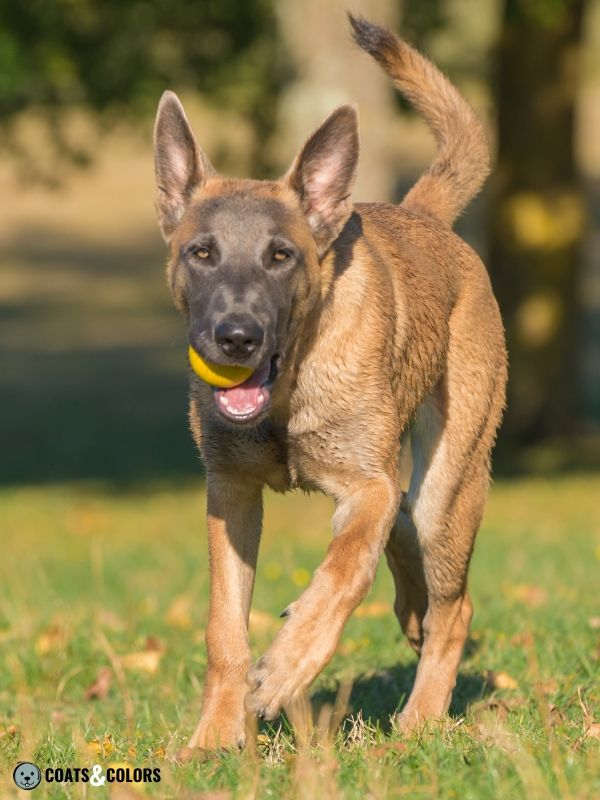



Color dilution turns all the dark pigment in his pattern blue, including his melanistic mask and the dark tips in his sable pattern causing a silvery overlay.
Color dilution also causes the skin pigment, nose pigment, eye rims, lips, paw pads, and nails to be blue. Shades of blue can range from light grey to slate grey to dark charcoal grey.
Additionally, blue Belgian Malinois tend to have lighter eyes.
Blue pigment in Belgian Shepherd dogs is excluded from breeding.
It is caused by having two non-functional versions of the MLPH gene or D-Locus.
Dogs with at least one wild type allele (D/-) can properly distribute melanosomes from pigment cells into hair shafts. Only dogs with two defective alleles (d/d) have blue pigment caused by pigment clumping due to a defective pigment transport system.
Are blue Malinois healthy?
In general, yes.
Only a very small number of blue Belgians seem to suffer from color dilution alopecia (CDA). CDA seems to happen in some lines more than in others. Overall, it is quite rare in Belgian Shepherd dogs.
And that really is the only health concern with blue Mals.

Blue coat is not associated with any other health problem.
It’s just that breeders who breed for fancy colors usually don’t put too much effort into breeding from healthy stock. But you should never buy a Malinois of all breeds from a backyard breeder situation anyway, right?
CDA is a skin condition that causes hair loss in diluted areas and may lead to skin problems. One of the first symptoms in young adults might be hair loss on the tips of the ears.
By far not all dogs with blue pigment are affected and most of the blue Malinois today seem to be perfectly healthy. It is just that this is a disease that can only emerge if a dog that is actually blue also has whatever causes CDA (which unfortunately is untestable as of yet).
But blue hair does not automatically cause CDA. It just predisposes a puppy to be at risk.
Breeds that often come with diluted pigment such as Weimaraners have selected against this condition over many generations finally removing it from the breed. Others gave up the fight against CDA and just banned diluted colors from their standards (such as the blue & isabella Doberman in FCI countries).
But while CDA is relatively uncommon overall, it still occurs more or less frequently in breeds where only some dogs are blue or lilac (such as Kelpies, Border Collies, or Dachshunds) or where only the odd puppy is born with blue pigment (such as Malinois).
How to breed away from something you can’t see or test for?
You can’t select against something that only shows up every few generations in some of the puppies born with blue pigment. So no one can predict for sure if a blue Malinois puppy will be affected or not.
Overall, color dilution alopecia seems not to be a major problem in blue Malinois.
But in general, it’s probably safer to breed from lines with lots of healthy blue dogs that would have had the problem at some point if it was present in their lines.
Liver Belgian Malinois
A very rare trait occurring naturally in the Belgian Mal is chocolate brown.
Dogs need to get one b allele from both dam and sire (b/b) to express brown eumelanin.
This also turns the skin pigment, eye rims, paw pads, lips, paw pads, nails brown. And it causes a liver nose, a brown melanistic mask, and brown hair banding in the coat.
Brindle Belgian Malinois
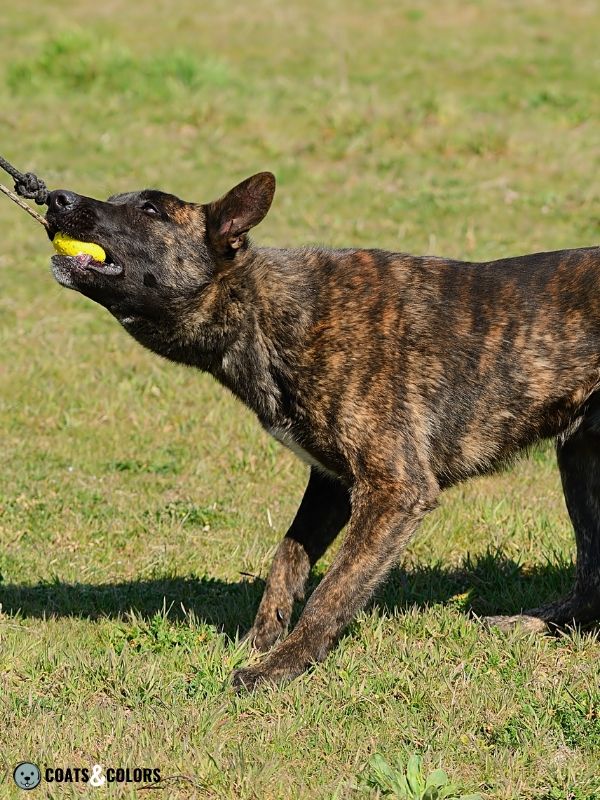
Breed standards list brindle as a faulty color pattern for all Belgian Shepherd varieties.
But one of the sister breeds is known for their brindle pattern, the Dutch Shepherd. And both breeds basically come from the same stock.
While brindle is selected for in Dutchies, it is selected against in Belgians. This was one of the rules invented at the beginning of the last century to set these highly related breeds apart from one another.
But many working dog breeders don’t care too much for artificial concepts like this.
Brindle is not that uncommon in performance-bred litters. Brindle Malinois dogs are kbr/kbr or kbr/ky but due to some problems with testing for brindle will test as KB/ky.
Brindle adds a layer of black vertical stripes on top of the tan pigment. Since brindle (kbr/-) is dominant or non-brindled (ky/ky) sable coat, it does not happen spontaneously.
Brindle Malinois usually come from brindled parents (the only exception being solid black dogs where the brindle pattern is not visible).
Agouti Belgian Malinois
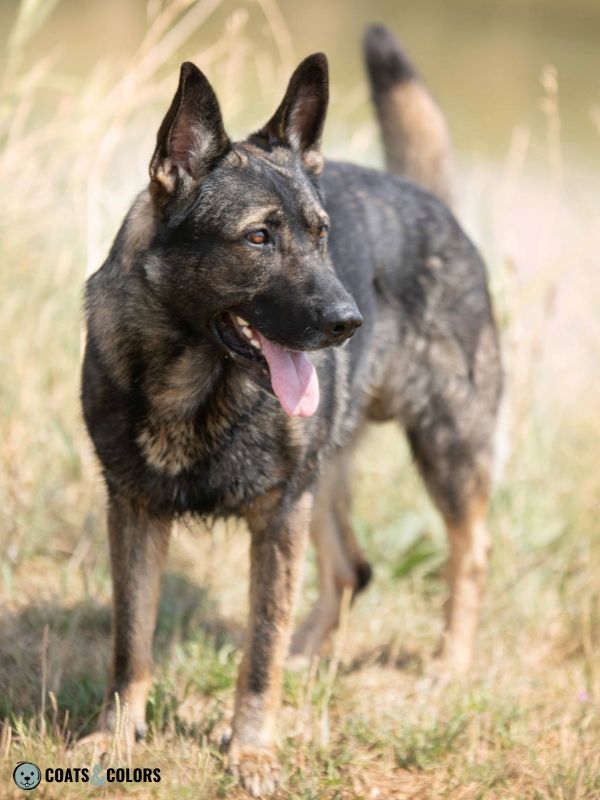
A small number of Belgian Malinois have an agouti pattern (aw).
Agouti carriers (Ays/aw) might have some more black in their sable shading than expected. But homozygous agouti (aw/aw) dogs will express an agouti or wolf sable pattern.
This causes hair banding made up of multiple light and dark bands. Agouti tends to be much darker than sable and puppies might look almost black at birth.
Agouti tends to add lots of banded hairs to the back and legs and a dark nose bar to the head with lighter non-banded hair around the dog’s underside, eyes, eyebrows, and chin.
But in Malinois, most of the typical agouti face markings get hidden underneath the black mask. Plus, Malinois are notorious for having darker shading than expected from a sable pattern.
So agouti dogs might actually not be that obvious and might go unnoticed in this breed.
For example, look at this purebred FCI Malinois, Lebenswolf Agent Boom, who was tested as being aw/aw. One of the confirmation reports says “with correct brown base color, very strong charbonnage over the entire body…“.
Black and Tan Belgian Malinois
Although quite rare, black and tan Malinois are not unheard of.
Only a small number of purebred sable Malinois carry tan points (Ays/at). Breeding two carriers can cause puppies to have two copies and express the pattern (at/at).
Looking for examples, I found one xMalinois with this pattern, Flik van de Leibeekhoeve.
Since Belgian Malinois color patterns always include a melanistic mask, the tan points on the face tend to be covered underneath black coat.

A small number of working line Malinois might even express a saddle pattern (ky/ky asa/asa), maybe from crossbreeding with GSD in the past?
These dogs are born with a black and tan pattern. But most of the black will fade until there is only a black saddle left. And the standard clearly lists “black overlay set in patches” as a fault.
White Belgian Malinois

There are no “albino white” or “all white” Belgian Malinois.
The common cause for a solid white coat in shepherd dogs is being recessive red (e/e) with very low phaeomelanin intensity. This means, they can 1) only produce tan pigment and can’t have a single black hair and 2) their tan pigment is almost white in color.
But all Malinois have a melanistic mask. And a puppy with an e/e genotype can’t be born from purebred parents that are always Em/Em and can only pass on Em at the E-Locus.
And to my knowledge, there is no e allele in Malinois, so no carriers (Em/e) either. And no albinism.
I guess, Belgian Malinois advertised for their white color most likely got this trait from crossbreeding with dogs such as maybe White German Shepherds. And then breeding back to a lighter and more athletic build.
Belgian Malinois Coat Colors Overview
The breed standard describes all the different traits a Malinois should have.
This includes his conformation and temperament but also the coat texture and color of an ideal representative of this breed.
The major kennel clubs often use their own standards provided by their affiliated breed club. These standards are usually similar in their general outline but can differ in details like coat color.
In the case of the Belgian Malinois, they agree that dogs should be sable with a black mask and some black overlay. Any color or color combination not described in the standard is reason for disqualification.
The AKC lists the Belgian Malinois as a separate breed. In Europe, the Malinois is just the smooth-coated variety of the Belgian Shepherd Dog (which also includes Tervueren, Groenendael, and Laekenois).
Let’s see what different clubs have to say about the accepted Belgian Malinois coat color patterns[1-3]:
| AKC | FCI | KC | |
|---|---|---|---|
| Fawn | ✅ | ✅ | ✅ |
| Fawn Sable | ✅ | (✅) | (✅) |
| Mahogany | ✅ | (✅) | (✅) |
| Red | ✅ | (✅) | ✅ |
| Red Sable | ✅ | (✅) | (✅) |
| Red Fawn | (✅) | (✅) | ✅ |
| Red Grey Sable | (✅) | (✅) | ✅ |
| Gray | – | – | ✅ |
| Gray Sable Gray Black Overlay | – | – | ✅ |
Brackets indicate color names that are not mentioned in the breed standard without excluding them.
Belgian Malinois Coat Color Genetics
A dog’s coat gets its colors from two pigment types called eumelanin and phaeomelanin. Different proportions of colors in a particular dog’s coat create different patterns.
But Malinois, like most dog breeds, can only produce some of all the possible colors and patterns. These are the genes and alleles involved in the patterns and colors of Malinois:
| E-LOCUS | Em = melanistic mask |
| K-LOCUS | KB = dominant black (maybe, rare!) kbr = brindle (rare!) ky = normal pattern |
| A-LOCUS | Ay = clear sable Ays = shaded sable aw = agouti (rare!)[4] asa = saddle pattern (rare!) at = tan points (rare!)[4] |
| B-LOCUS | B = black B = liver (rare!)[4] |
| D-LOCUS | D = normal pigment d = diluted pigment (rare!) |
| S-LOCUS | S = no spotting sP = piebald spotting (rare!) |
| M-LOCUS | m = non-merle |
Eumelanin Colors
All Belgian Malinois are fixed for black eumelanin.
And it is always eumelanin that gives color to a dog’s nose, skin, nails or eyes.
Still, a small number of Malinois have blue pigment.
And an even smaller number has liver brown pigment instead of black.

Phaeomelanin Intensity
The ideal phaeomelanin intensity described by the AKC standard is rich fawn or tan to orange-red or red to russet mahogany with the latter being described as a very dark rusty red color.
The FCI just says that a Malinois has to be fawn.
But they also consider it as a fault when “tints are not warm enough“. So they basically mean the same and want a Malinois to have a rich yellow, orange or red coat.
All standards consider a yellowish light-colored Belgian Malinois with “cream“, “too light a fawn“, “washed out fawn” or “diluted fawn” coat as a serious fault.
But the underparts of the body, shoulders, underside of the tail, and breeches are always lighter since the light undercoat is longest and more visible in these areas.
The British Kennel Club, on the other hand, includes “all shades of red, fawn, grey”. With “grey” being an extremely light silvery or almost white shade of phaeomelanin.
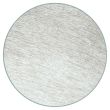

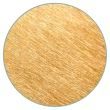
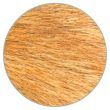
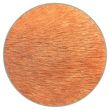
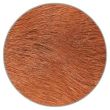
White Spotting
Belgian Malinois can have some residual white such as a small white spot on the chest or white toes.

The AKC even tolerates some white toes to be accompanied by white nails while the FCI and Kennel Club demand nail pigment to be dark.
But a Belgian Malinois should not have obvious white markings.
The different standards mention “white marking on chest forming tie“, “white markings on the forechest that extend to the neck” or “white on the feet going beyond toes” as a faulty color.
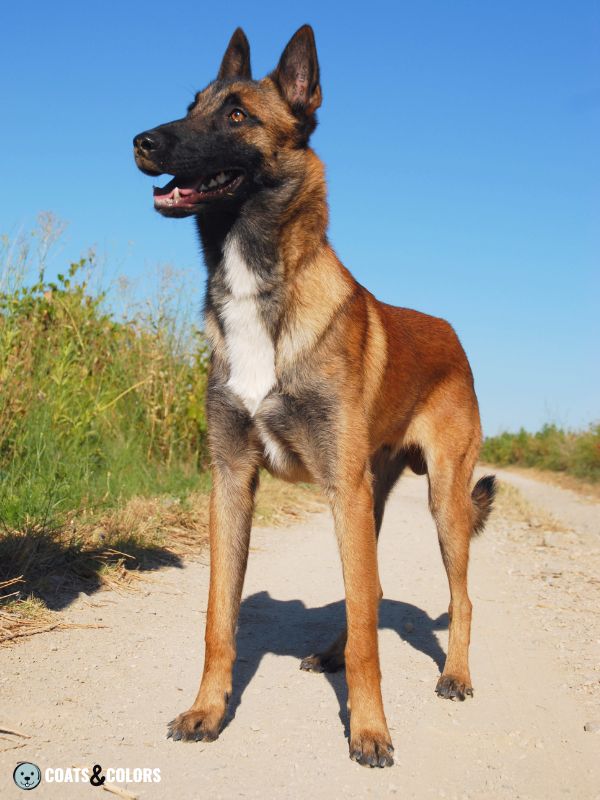


The same goes for any white markings anywhere other than the forechest and toes.
Still, there are known cases of Belgian Malinois with white markings! Many of you will likely have seen one or the other Belgian Malinois with a white chest, right?
Examples of Belgian Malinois white markings commonly include rather large white chest markings or white socks extending up the pasterns.
And sometimes even small white blazes (found an example on working-dog).
Surprisingly, piebald (sP) can be found in Tervueren and Groenendael, although quite rare[4]. So there is a chance this trait also ended up in or was also not fully removed from Malinois lines.
Color Patterns
The accepted patterns in a dog breed describe the distribution of colors in a dog’s coat.
The only pattern a Belgian Malinois comes in is black-based sable with a melanistic mask and some amount of black shading.
Many of the breed-specific terms for different colors of Belgian Malinois revolve around the color of their tan pigment and the amount of dark shading.
But in genetic terms, it is still the same pattern.
Please note that I did not list every possible combination that causes non-standard colors in the table below, I just highlighted the difference to the standard pattern:
| Color Term | Genotype |
|---|---|
| Black-Based Sable + Mask | B/B D/D ky/ky Em/Em Ay/– S/S B/B D/D ky/ky Em/Em Ays/Ays S/S + phaeomelanin intensity |
| Non-Standard: | |
| Blue-Based Shaded Sable + Mask | B/B d/d ky/ky Em/Em Ay/- S/S |
| Liver-Based Shaded Sable + Mask | b/b D/D ky/ky Em/Em Ay/- S/S |
| Black-Based Sable Brindle + Mask | B/B D/D kbr/– Em/Em Ay/- S/S |
| Black-Based Agouti + Mask | B/B D/D ky/ky Em/Em aw/- S/S |
| Black-Based Saddle Pattern + Mask | B/B D/D ky/ky Em/Em asa/- S/S |
| Black-Based Tan Point Pattern + Mask | B/B D/D ky/ky Em/Em at/- S/S |
| Solid Black (recessive black) | B/B D/D ky/ky Em/Em a/a S/S |
| Solid Black (dominant black) | B/B D/D KB/- Em/Em Ay/- S/S |
Belgian Malinois Eye and Nose Color
According to the breed standard of major breed clubs, the lips have to be black. They also call for black-rimmed eyelids and a black nose without any traces of depigmentation.
This leaves no wiggle room and is why the Belgian Malinois is almost fixed for black eumelanin (B/B D/D). And this affects all eumelanin on the body, including sable shading, masks, eyes, and nose.
But there are still some dogs that carry color dilution (D/d) or liver (B/b)[4].
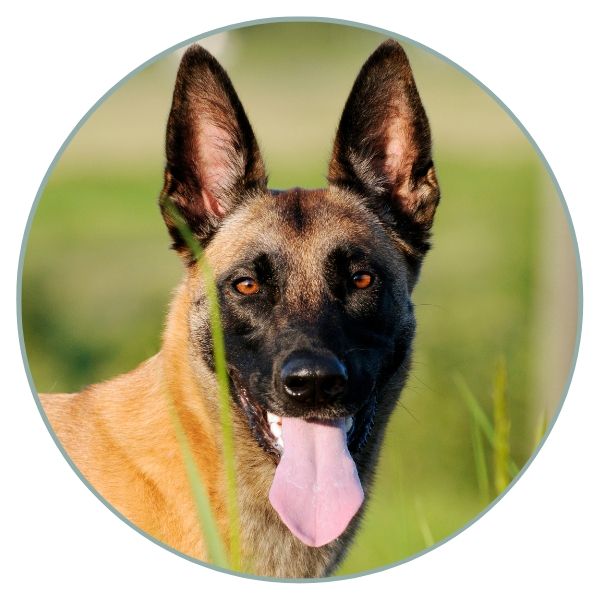

And this creates a slim chance for puppies to be born with blue eumelanin and a slate gray nose (B/- d/d) or brown eumelanin and a chocolate brown nose (b/b D/-) when breeding from carriers or affected dogs.
Both traits are quite rare when not bred on purpose. They basically never meet “in the wild” so there are virtually no purebred Malinois with diluted brown or lilac pigment (b/b d/d).
What about Belgian Malinois eye colors?
The different breed standards call for eyes to be brown, preferably dark brown.

Light eyes happen but are considered a fault. They look too bird-of-prey-like given their contrast to a jet-black mask underneath.
But it is normal for blue-pigmented or liver-pigmented dogs to have somewhat lighter eyes with a green or yellow color. And they can have piercing green-blue eyes during puppyhood.
Lastly, Malinois don’t express traits associated with blue eyes such as extensive head white or merle. There is reason to believe that adult Belgian Malinois with blue eyes might have some Husky in their pedigree.
Belgian Malinois Coat Types
The Malinois has a short low-maintenance and weather-resistant coat with dense undercoat.

Other Coat Types in Malinois
Some less common alleles in this breed can produce a non-standard coat type[4].
The AKC separated the different varieties of Belgian Shepherd dogs into different breeds. Their Malinois are almost fixed for short coat (L/L).
The variant for short coat (L) is dominant over long coat (l), dogs with at least one short-hair allele (L/L or L/l) should have a short coat. But being a long-coat carrier (L/l) sometimes causes the coat to be just the tiniest bit longer than expected on a Malinois.
In Europe, Malinois, Tervueren, Groenendael, and Laekenois are still considered varieties of the same breed, the Belgian Shepherd Dog. There is a ban on crossbreeding varieties but matings can be approved by the responsible breed club and do happen.
Thus, there are quite some Malinois out there that carry long coat alleles (L/l). And this creates a chance for long-haired Malinois puppies (l/l) to be born out of two smooth-coated carriers (L/l).
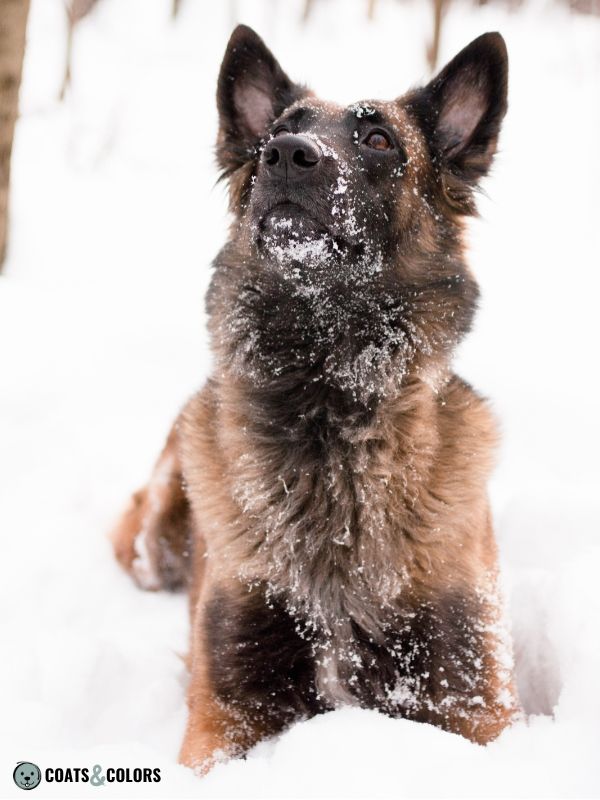
Since Tervueren are mainly bred for show and Malinois are mainly bred for work, there is quite a difference in type nowadays. Although long-haired Malinois are registered as Tervueren, they are very obviously not the same and tend to have much less fluffy and long coats.
This led to the unofficial separation between the multi-generation show-type Tervueren and the Working Tervueren, which have some Malinois not too far down their pedigree.
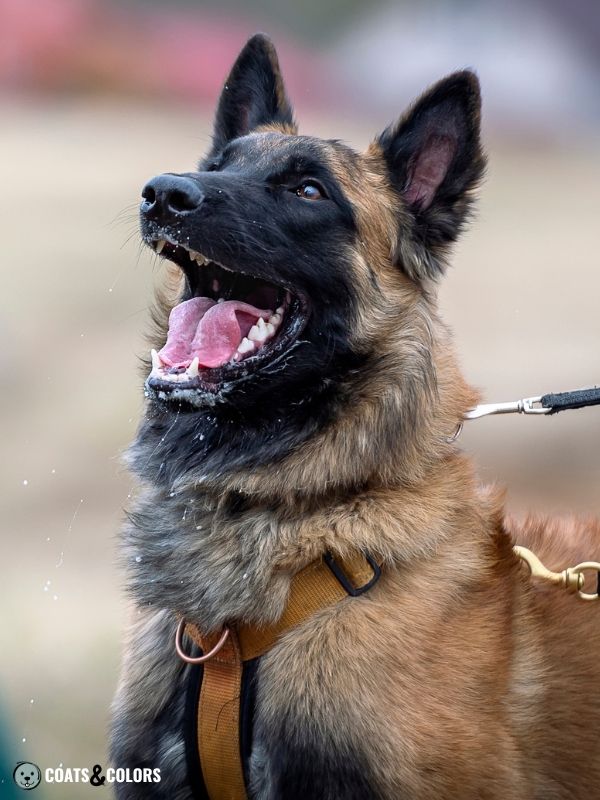

Surprisingly, an even smaller number of Malinois also carry curly coat[4]. Maybe from the occasional crossbreeding with the rare wire-haired Laekenois where curls are not that obvious.
However, this can only be expressed in dogs with a certain length of hair, and a wavy coat is selected against in Malinois, Tervueren, and Groenendael.
Learn More
Links
[1] American Kennel Club (AKC): Official Standard of the Belgian Malinois (pdf)
[2] Fédération Cynologique Internationale (FCI): Belgian Shepherd Breed Standard (pdf)
[3] The Kennel Club (KC): Belgian Shepherd Dog (Malinois) Breed Standard
[4] Dreger et al. (2019). True Colors: Commercially-acquired morphological genotypes reveal hidden allele variation among dog breeds, informing both trait ancestry and breed potential. PLoS ONE 14(10): e0223995. https://doi.org/10.1371/journal.pone.0223995
[5] Dudásová, Miluchová & Gabor (2021). Detection of MLPH gene polymorphism in population of the Belgian Shepherd variety Malinois. Journal of Central European Agriculture. 22. 66-71. https://doi.org/10.5513/JCEA01/22.1.3028
[6] https://www.bloedlijnen.nl

Hi! I’m Steffi. I am a biologist and a big time dog nerd. You are curious about coat color genetics? You’ve come to the right place! Read more.



